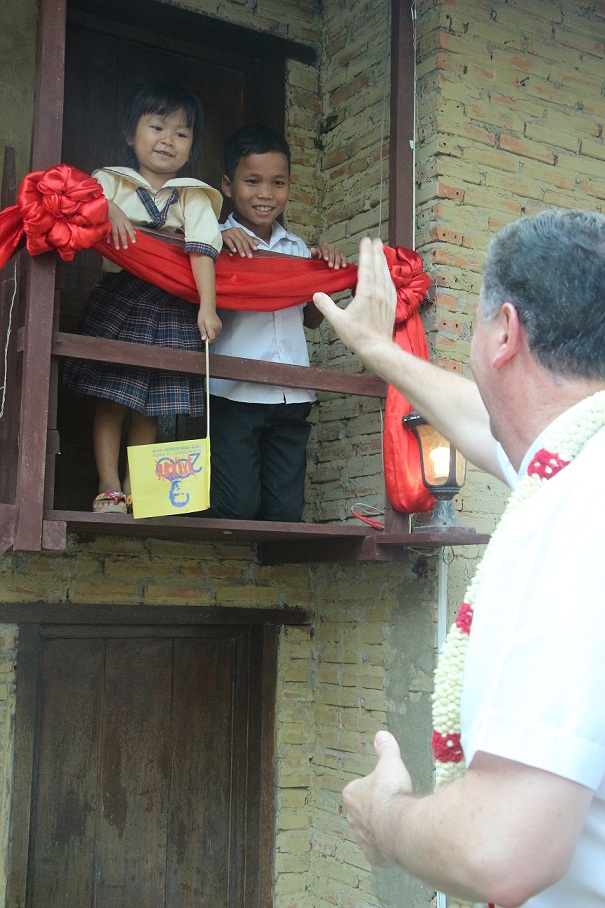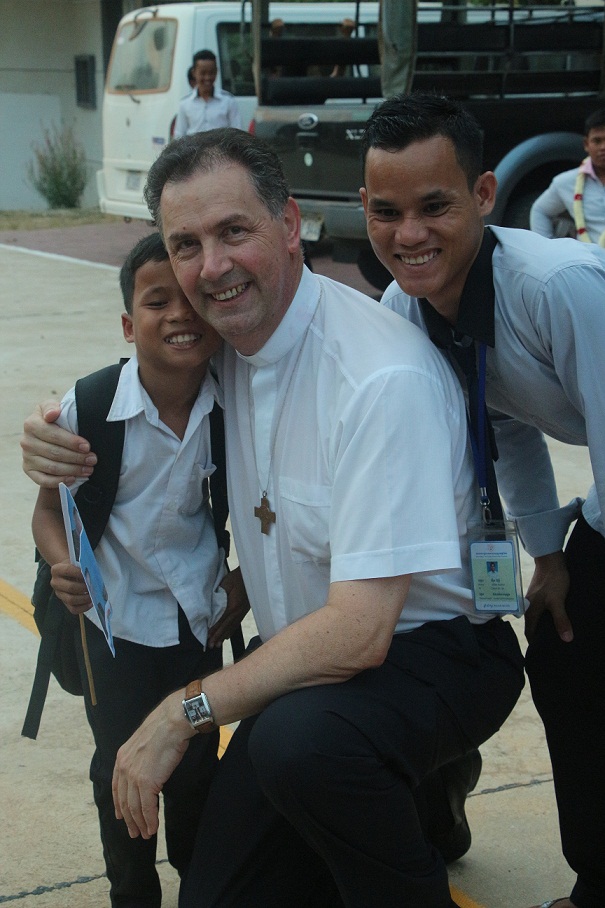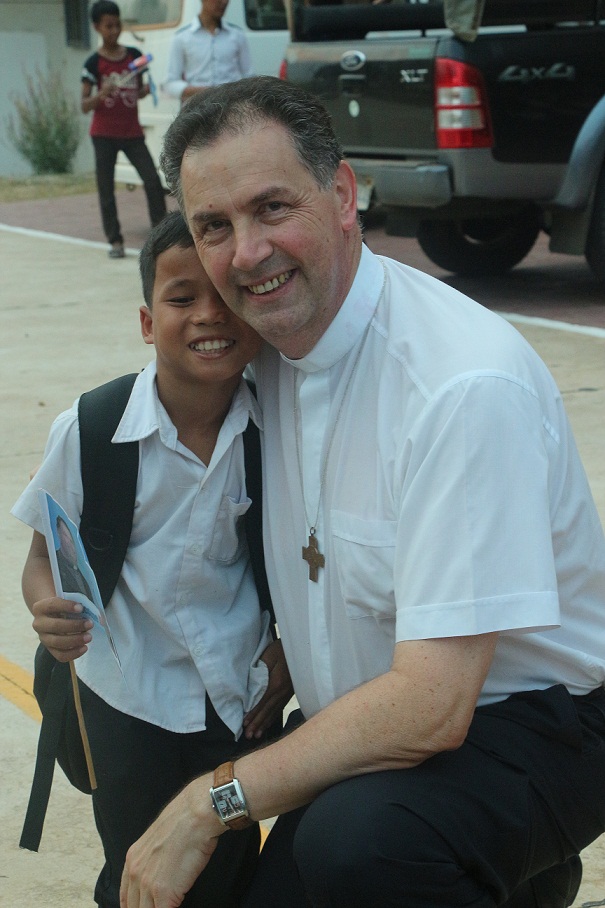Kep City, Cambodia -- The name Jarai can sound unknown for many people in the world, but it is very much alive in South East Asia, especially in Cambodia and Vietnam where the Jarai people live and survive many situations. During the last Indochina World, many Jarai highlander families migrated to Europe and America. In his short stay in Don Bosco Kep, the Rector Major greets some Jarai children and youth, who study for a better future, coming 700 kilometers far in northern Ratanakiri province, where they could be object of child work in rubber plantations. Unlike the rest of the Cambodian population that is 95% Buddhist, the Jarai people are animist and many Protestant Christians. There are also other ethnic minority groups like Kreng and Tapong, facing challenges such as the lost of their ancestral territories due to deforestation and development projects and their impoverishment. Some children and youth have joint the Don Bosco schools in Cambodia, leaving their province to Phnom Penh, Sihanoukville and Kep, though the Salesians promote them to return to their land, becoming leaders for their own people and protecting their language.

Teng, a Jarai boy, and Palin, a Khmer girl, stand at the Don Bosco Birth House in Kep to wait for the passing of the Rector Major.


Teng enjoys the embrace of the 10th successor of Don Bosco. He tries to greet him in English, something he does good, because he speaks Jarai, a Malayo-Polynesian language and Khmer.

Another Jarai boy, Bonny, joint the moment of happiness of Teng. Bony studies social communication and he wants to work in his own Ratanakiri province to support his own people at the style of Don Bosco, so it was very inspiring for him to meet Don Ángel.



















